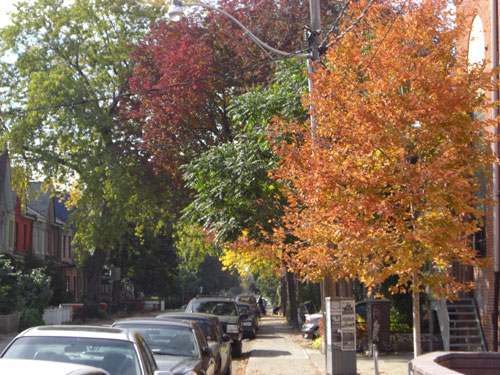
On probably the last warm day of the year, I went for a holiday Monday walk along Adelaide Street West, where it becomes a local street after Bathurst. It’s an interesting street, a mix of modest old houses, new high-density townhouse condos, social housing, and old industrial buildings.
It comes to an end at the CAMH (Centre for Addiction and Mental Health) grounds. CAMH has started a major plan to re-integrate its grounds into the city, and when it is eventually completed it will continue Adelaide West (PDF) through to Fenning Street at the western edge of the grounds (with a footpath through to Sudbury Street). You can actually continue in a way even now along various driveways in CAMH. Along the way, you pass this even-more-phallic-than-usual smokestack.
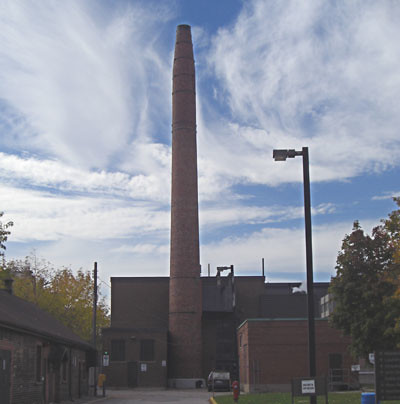
You can get by it and almost reach Sudbury Street, but there’s a fence at the border between CAMH and the Dufflet’s Pastries building, and you have to go up to Queen West to get around it.
They have now finished the first part of the CAMH redevelopment at the western end of its grounds, and it features this pleasant park on Queen Street with lots of seating spread out on the lawn. It’s a nice idea, but you can already see where people are wearing down a logical shortcut in the grass — it might be an idea to put stepping stones there before it becomes a muddy track.
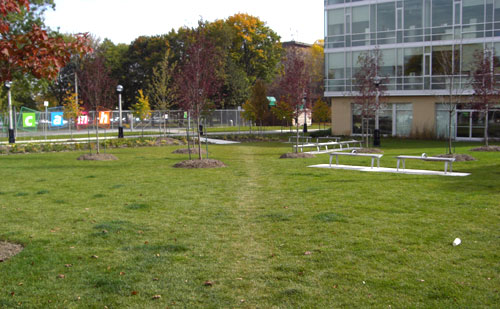
Heading back to Sudbury Street, at its end I wandered onto the dirt road beside the railway tracks and passed the holes in the ground for the new buildings at the back the Queen West triangle. Curiously, there was a narrow pathway between the fences around the two holes, which led to the back of 48 Abell, the building full of artists that was a focus of resistance to the development plans. Someone had built a charming patio at the back out of found materials from the construction.
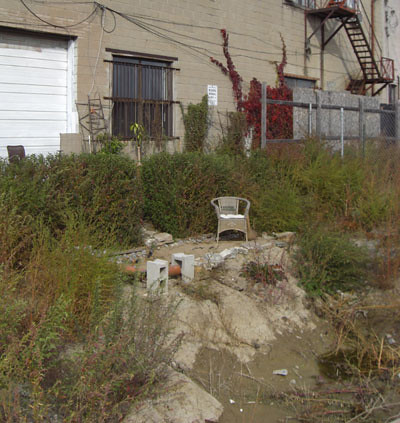
I chatted briefly with the guy who put it together, and asked him how much longer the building would survive. He pointed out that, with the current financial crisis, even construction on the existing projects had slowed down. Without loans or a strong market for housing, it might be a long time before anyone wants to start a new building. What artists and community activists were unable to do, reckless financiers might accomplish — delay the demolition of 48 Abell.
There were some other really lovely little projects along the walk where people have decided to beautify public space by growing things around hydo poles.
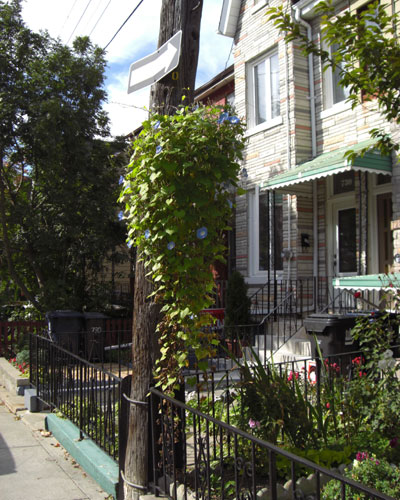
Someone trained their climbing plant to climb this hydro pole on Adelaide West.
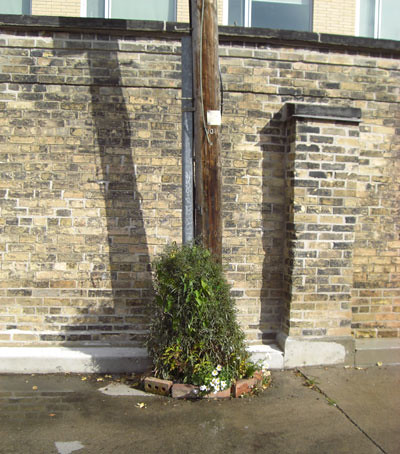
Someone planted a little garden around the base of a hydro pole in the lane just west of CAMH. The neighbour said that the city comes through once a year to cut down all the plants in the lane, but they leave this mini-garden alone. (Incidentally, the historic wall of CAMH makes an attractive border to the laneway. I’m not sure if they plan to take it down on Shaw St. — it kind of kills the street — but it’s good to know there is a lot more of this wall at other sides of the property that will, I assume, be kept).

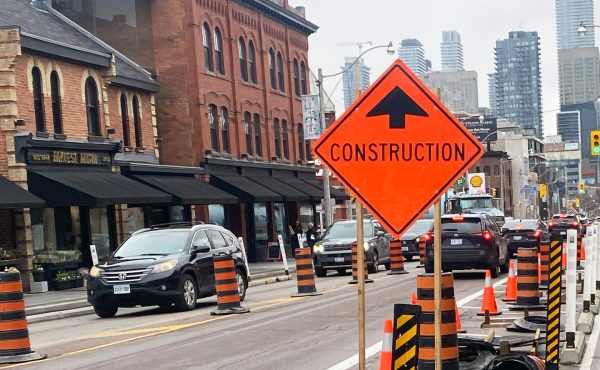
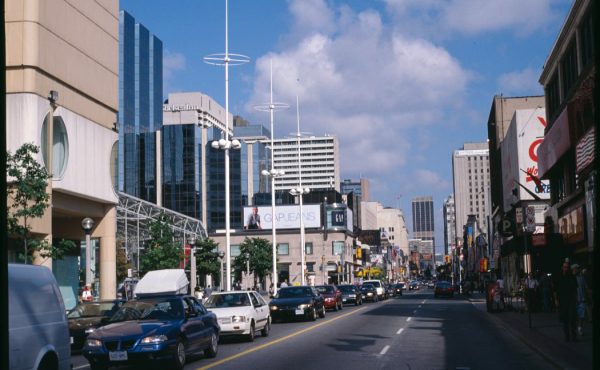

5 comments
Great article – I take Adelaide east when I make my way into the city; it’s a bit of a green oasis all the way to Bathurst.
Yes, let’s hope that the current money woes (or is that owes) do preserve 48 Abell where systemic neglect and weak heritage and energy policy have failed. Demolition of larger well-built and solid buildings are urban oil spills because of the embodied energy within the bricks (or concrete)
Huh?
A well-built structure had a lot of energy put into it; demolition puts all that past energy use to waste. Renovating and re-purposing a building has a lower historical carbon footprint. 😉
Thanks for the info on Adelaide west of Bathurst – have not walked on it past Bathurst before.